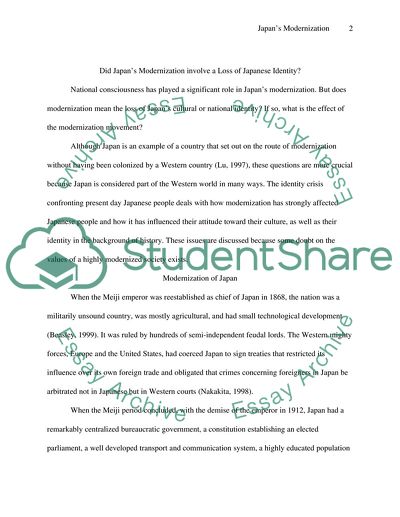Cite this document
(“Did Japans modernisation involve a loss of Japanese identity Essay”, n.d.)
Did Japans modernisation involve a loss of Japanese identity Essay. Retrieved from https://studentshare.org/miscellaneous/1549279-did-japans-modernisation-involve-a-loss-of-japanese-identity
Did Japans modernisation involve a loss of Japanese identity Essay. Retrieved from https://studentshare.org/miscellaneous/1549279-did-japans-modernisation-involve-a-loss-of-japanese-identity
(Did Japans Modernisation Involve a Loss of Japanese Identity Essay)
Did Japans Modernisation Involve a Loss of Japanese Identity Essay. https://studentshare.org/miscellaneous/1549279-did-japans-modernisation-involve-a-loss-of-japanese-identity.
Did Japans Modernisation Involve a Loss of Japanese Identity Essay. https://studentshare.org/miscellaneous/1549279-did-japans-modernisation-involve-a-loss-of-japanese-identity.
“Did Japans Modernisation Involve a Loss of Japanese Identity Essay”, n.d. https://studentshare.org/miscellaneous/1549279-did-japans-modernisation-involve-a-loss-of-japanese-identity.


